The Temple of Mithras in London lay forgotten until 1954 when escavations took place during the rebuilding after World War II. It was not known what the Roman structure was until the last day of escavations when a statue's head depicting Mithras emerged. The street level during Roman times, when the temple was constructed, is now located seven meters below the current street level. The temple lies underneath the new Bloomberg building in the City of London, near Bank and Cannon Street stations and where one of London's lost rivers, Walbrook, flows under ground. The new Bloomberg building began construction in 2010 and was completed
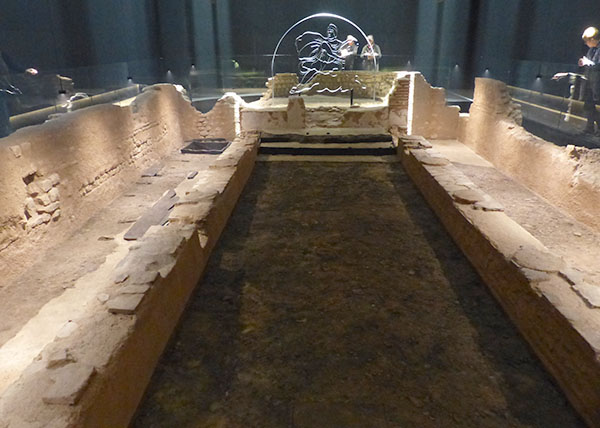
In 2010, I worked on Dowgate Hill and walked past the Bloomberg building site (it was just derelict land with scaffolding around it then) every day. I watched the site evolve until it opened in 2017, along with a new tube entrance opposite the 'Starbucks Church" near St. Stephen Walbrook church. Signs posted for "Temple to Mithras" were located at the station and on street level, so I've always wondered what the ruins look like when I worked nearby. While the ground was being escavated for the new Bloomberg London office, many more artefacts from Roman London were found, including additional parts of walls and other buildings.

The Bloomberg SPACE (the name given to this little area dedicated to the temple museum) contains interactive London Jukebox, modern art but not related to the temple. It also contains a wall of artefacts discovered in the past decade during the escavations for the new headquarters. Each of the items has been dated with a description that can be read about. There are several other items that are not on the wall, and they are still cleaning other items.
The items ranged from tools to beauty products and items, brooches, pins, buckles, keys, glass bottles, vases, storage vessels, oil lamps, a shrine, tiles, mosaic, shoes, wood, and pottery. The items survived due to being water-logged from the Walbrook that flowed here. One of the most curious items was the tablet detailing London's first recorded transaction - a promise of payment from one person to another. These tablets (see the image top right) were filled with black wax and scratched on. Sometimes, the writer pressed hard, so the message could be read on the wood underneath. Over 400 fragments of tablets were discovered here, and this is the oldest writing it Britain to be discovered.
An art exhibition is located on the ground floor with the mentioned artefacts and an art installation featuring music about London, mapping London through songs with a 1950's style jukebox that plays all of the songs in the list - everything from the Kinks "Waterloo Sunset" to Lily Allen's "LDN" and "London Calling" by the Clash.
Going down the stairs to the lower level brought three interactive objects from the temple to learn more about the cult, a seating area, and audio about the temple and cult being played overhead. Unfortunately, a couple of very noisy groups meant that I could not hear the audio. Every twenty minutes, the temple room, located a floor below, is opened for the light and audio show bringing the temple to life. The ground level in Roman times is 23 feet (7 meters) below the current ground level. On the stairs on the way down, a line represented a point in history where the ground level was for that age. Apparently, dirt and rubble builds up over time to raise the ground.
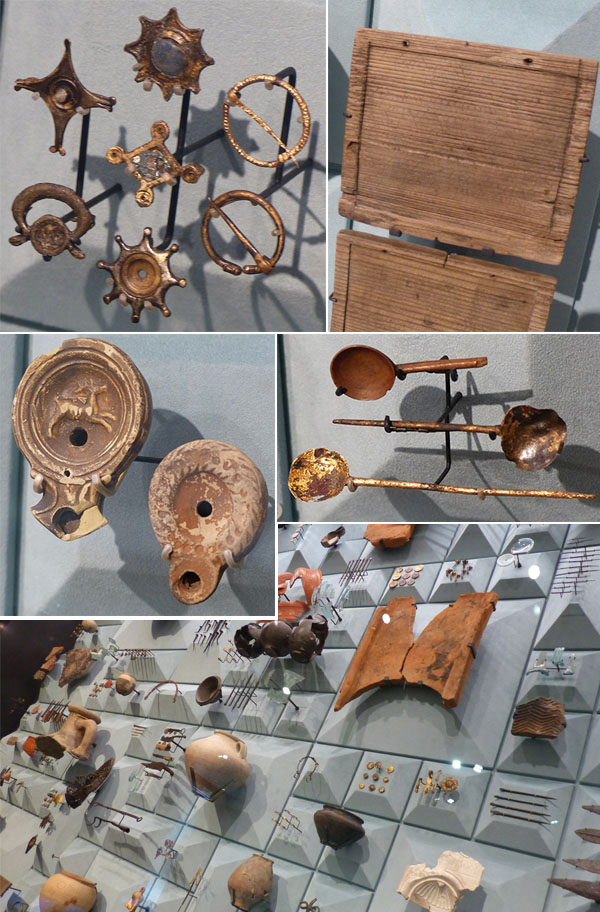
The Temple of Mithras was built in 3rd century AD, 200 years after London was established by the Romans. Not much is known about the cult of Mithras, but Mithras was a sort of god that slayed a bull. This slaying of the bull seems to have played an important role in the cult as it is depicted often and was possibly used in some ceremonies. Other imagery that features often is the zodiac. The cult perhaps discusses some creation theory. It is also noted that a list of patrons were discovered, but all of these have been male. It seems that females were not permitted, or perhaps were not interested in this cult. Many of the followers of the cult also appear to have been soldiers or slaves.
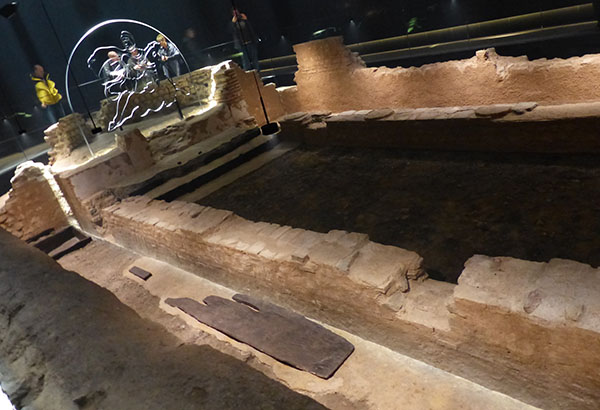
After the structure was discovered in the early 1950s, the temple was taken apart and removed to a site close by. It was reconstructed at the current location underneath Bloomberg's office to roughly where it was originally built; it was not moved to the exact place because additional walls and ruins were discovered and left as they were; they were too fragile to be moved or re-sited.
The temple would have been dark; it did not appear to have any windows and lamps and torches would have been used for lighting.
London's Temple of Mithras is free to visit, but reservations must be made in advance. Please see the website here to make a booking: www.londonmithraeum.com
I'd also suggest a visit to the Museum of London to see the discovered head of Mithras statue and other artefacts from the original escavations and Roman London in general.
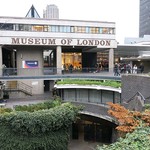
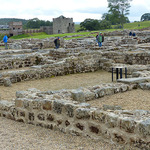

Leave a comment